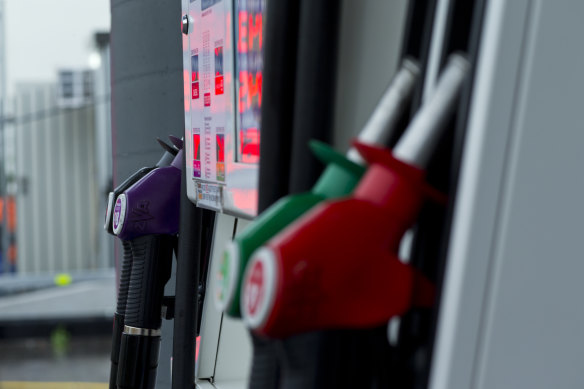‘The risk has gone up’: Petrol prices are at a two-year low, but maybe not for long
By Simon Johanson and Nick Toscano
Australian petrol prices have fallen to their lowest average levels in more than two years, but motorists are facing a heightened risk of fuel costs climbing yet again if fighting in the Middle East intensifies and disrupts oil supplies.
Iran’s missile strike on Israel this week has pushed up global oil prices amid worries it could unleash a wider regional conflict and either disrupt Iranian oil production or block the Strait of Hormuz, a key choke point for crude tankers.

Fighting in the Middle East has increased worries about oil shocks that could flow through to the price of petrol in Australia.Credit: Ryan Stuart
Oil markets and Australian fuel prices have been relatively subdued despite more than a year of violence between Israel and Hamas in Gaza, analysts and motoring groups say. The latest industry figures show the national average weekly pump price for unleaded petrol has now dropped to $1.72 a litre.
“Average prices in the major capital cities at the bottom of the [price] cycles went into the $1.60s, and Sydney at one point got to $1.59,” said Peter Khoury, a spokesman for the NSW-based National Roads and Motorists Association (NRMA).
“There has been some relief at the bowser, but Iran’s injection into the conflict in the last 48 hours doesn’t help.”
Experts said on Thursday that Iran’s involvement in the conflict posed a more significant threat to fuel prices because Iran produces up to 3 per cent of the world’s supply of crude oil – the natural resource that is refined into usable fuels including petrol and diesel.
AMP chief economist Shane Oliver said the immediate increase in the global benchmark Brent oil price from $US71 a barrel to $US76 a barrel following Iran’s missile barrage had returned it roughly to where it was trading a week earlier. “It hasn’t moved in a material sense,” he said.
But the risk of a bigger price increase “has certainly gone up”, he added, with much now hinging on how Israel chooses to respond.
“It could go two ways here,” Oliver said.
The first would be an aggressive Israeli response, which affects oil supply and could feasibly drive up the oil price a further 20 to 30 per cent, depending on the scale of disruption. “That would mean a big flow-on for the Australian motorist, as each $US20-a-barrel rise in world oil prices adds about 20¢ a litre to the price at the pump,” he said.
The other scenario, he said, would be no further escalation or disruption to oil supplies, which could even result in oil prices declining amid strong global production levels that could increase further this year if Saudi Arabia moved to pump more oil from December 1 as planned.
Khoury said motorists were hoping that oil markets would adjust following the initial surge earlier this week, the same as they did after the opening days of the Israel-Hamas conflict on October 7 last year.
“I think everyone is waiting to see what happens next,” he said. “But we’ve consistently seen the markets adjust shortly after a jolt, and that’s what we are hoping to see now,” he said.
Saul Kavonic, an energy analyst at MST Marquee, said the market had been dismissing the risks of an oil supply shock after two years of no disruptions eventuating from the conflicts in Ukraine and the Middle East. But he said the escalating conflict could now shake oil markets out of their complacency.
“Geopolitical risk fatigue set in,” he said. “That may now change.”
If the worst-case scenario eventuated and Israel decided to retaliate by hitting Iran’s oil infrastructure, or the rising conflict severely interrupted the passage of tankers through the Strait of Hormuz, oil and gas prices could exceed the unprecedented highs reached during the global energy crisis of 2022, Kavonic said.
This would have three times the market impact of the oil price shocks of the 1970s Iranian revolution and Arab oil embargo, and could send oil closer to $US100 a barrel again, he said.
The Business Briefing newsletter delivers major stories, exclusive coverage and expert opinion. Sign up to get it every weekday morning.